Genoise Sponge
A deep dive and a vanilla cloud cake recipe ☁️
I can’t believe that I haven’t already written a deep dive on genoise sponge. I use it all the time and I love it! I think part of the reason I haven’t written about it yet is that, on the surface, it seems like quite a simple sponge. I mean, it only contains four ingredients: eggs, sugar, flour, and butter. But it can be a tricky customer. I must have made it hundreds of times, sometimes gloriously fluffy, spongy and moist, sometimes as flat as a pancake, and sometimes airy but dry. In recent years, I’m happy to say that most of my sponges have been of the light, airy variety and I’ve had fewer and fewer pancakes, so I’m going to share everything I’ve learnt.
This week, we’re also using genoise sponge to make a blueberry, ear grey & lavender (not) princess cake, click here to make it! This recipe is exclusively for paid subscribers, if that sounds like something you’re into, please consider becoming a paid subscriber. You’ll receive an exclusive recipe every week, plus access to the full archive of over 100 thoroughly tested cake and dessert recipes. And you'll be helping support me so I can continue creating and sharing recipes! 🩷
It’s just £6 a month or £60 for a whole year. To subscribe or upgrade, just hit the button below and join me for more cakey fun.
First up, what is genoise?
Genoise is a super light sponge cake. The only leavening agent is the whipped eggs. Unlike chiffon cake, the eggs are usually whipped together (we’ll touch on this more later) before flour and butter are folded through. It generally has a very low fat content, making it slightly drier than a chiffon cake but a little bit more sturdy.
Ingredients
Genoise always uses the same four ingredients. I’ve played around with my ratios to get a sponge that’s both light and sturdy enough to stack. Let’s have a quick chat about what each of them is doing.
Eggs – All of the air we’re incorporating comes from the whipped eggs, so the higher the proportion of eggs, the fluffier the sponge. However, too much egg and the sponge won’t be able to hold onto the volume and will collapse as it bakes.
Sugar – Obviously, sugar adds sweetness, but it also helps to stabilise the eggs as they whip, allowing them to hold onto more air. You can swap the sugars out in this sponge without altering the texture at all.
Flour – Flour holds everything together and gives the sponge structure. However, it also absorbs moisture and can dry things out, so I use just enough to stop the sponge from sinking while keeping it nice and moist. Since we don’t really have cake flour in the UK, I use a mixture of plain flour and cornflour, this reduces the gluten, making the sponge extra tender.
Fat – Most recipes use melted butter for the fat. This might be an unpopular opinion, but I don’t get on with melted butter in egg-foam cakes. The window in which it’s good to work with is too narrow: too hot and it bursts the air bubbles; too cold and it sets, making it hard to mix in and leading to overworking – again losing air and ending up with a flat, dense sponge. I find it much easier to use oil. Any neutral oil is good; I use light olive oil most of the time. I hear you shouting, “but what about that lovely butter flavour?” The quantity of fat in a genoise is so low that you’re really not getting much flavour from it. In my opinion, the hassle of using butter isn’t worth the minimal payoff in flavour.
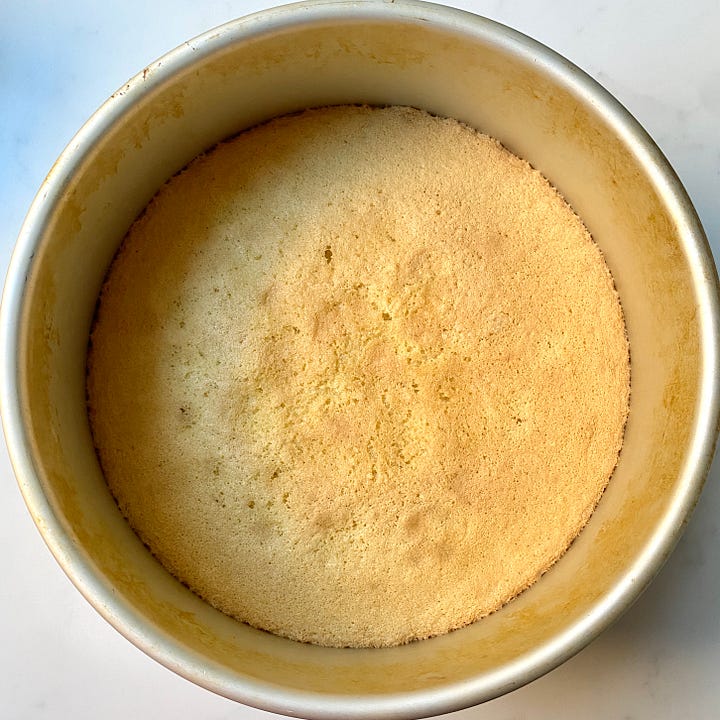
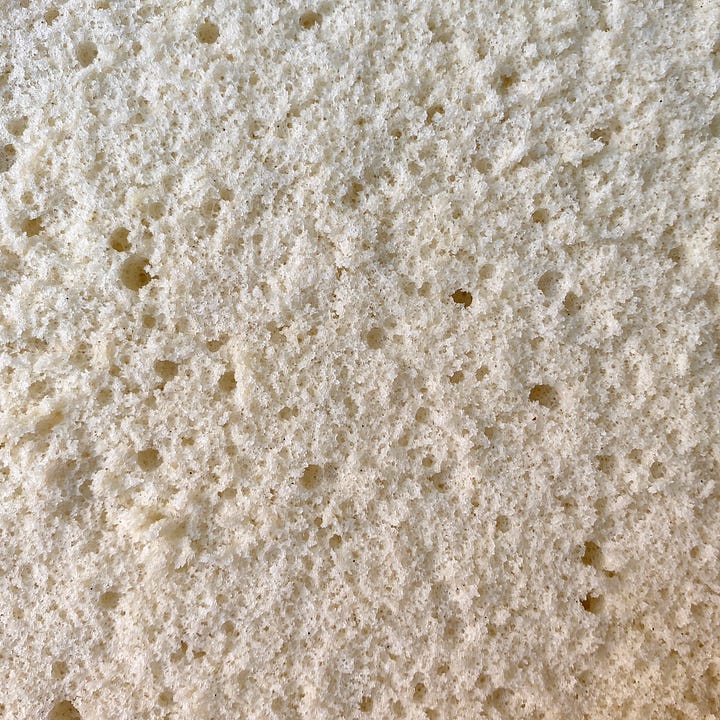
To heat or not to heat?
Most genoise recipes involve heating the eggs and sugar over a bain-marie. I’ve experimented with both heating and not heating, and I really think it’s worth taking the time to warm the eggs before whisking.
Heating the eggs to around 40 to 45°C (104 to 113°F) helps the proteins in the eggs start to unfold, which means that when they’re whipped, they can trap more air and are less likely to collapse when you fold in other ingredients. If you’ve ever made Swiss meringue, you’ll have noticed that it’s much more stable than French meringue. The same applies here.
I’ve made genoise with both heated and unheated eggs. When whipped, I couldn’t really tell the difference. However, as soon as I started to add other ingredients, I found that the unheated egg mixture began to lose air and collapse, while the heated mixture was much more stable and allowed me to take my time folding everything in.
It’s definitely possible to make a nice genoise without warming your eggs first, but if you’re new to egg-foam sponges, I’d highly recommend heating them. I use a bain-marie, but I’ve seen others microwave the eggs in 20-second bursts. Just do whichever you prefer. Either way, be careful not to scramble your eggs and take your time when folding in the other ingredients. Which leads us on to…

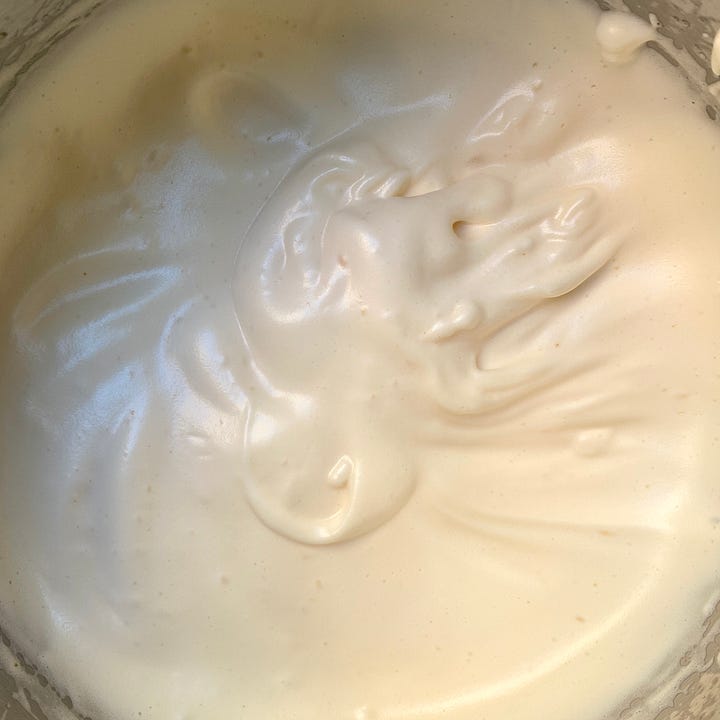
The Mixing
Eggs & sugar - We’ve already established that it’s best to heat them, but what then? I heat and then whisk rather than whisking on the heat, it’s faster and saves me from having to stand by the stove for what feels like years. When whisking, most recipes call for ribbon stage, which means the mixture should fall off the whisk in ribbons and be thick enough to stay on the surface of the mixture for a few seconds. However, I find that we can get even more air in and the mixture should be somewhere between ribbon stage and soft peaks. When it’s nice and fluffy, we reduce the mixer speed for 5 minutes, this bursts any larger air bubbles which are less stable and encourages small, sturdy air bubbled which is what we want.
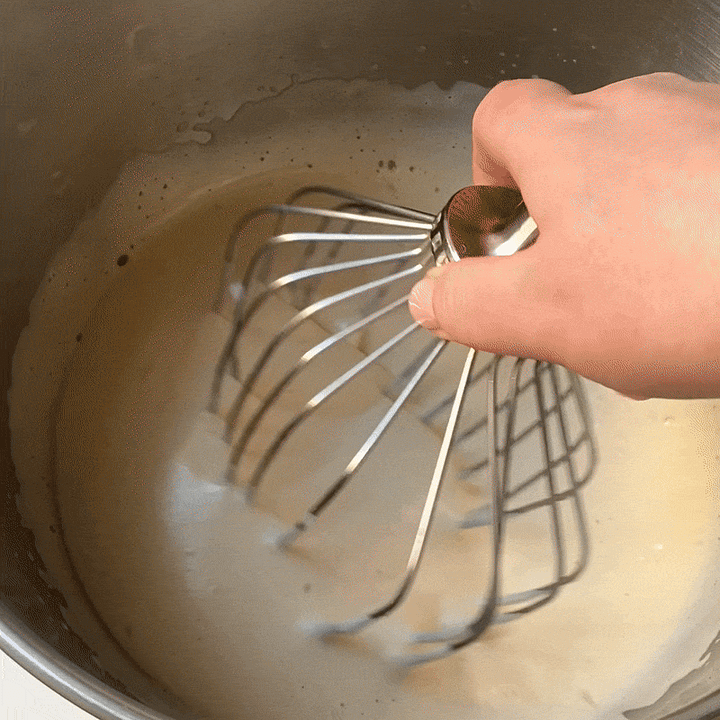

Eggs after whisking for 5 minutes vs eggs after whisking for 10 minutes Oil & egg mixture - Oil is naturally reluctant to emulsify with the rest of the batter so we make what is knows as a liaison batter, this is where a little bit of the egg mixture is added to the oil and it’s mixed until emulsified, this makes it much easier to incorporate into the rest of the batter. Because we’re only using a little bit of our egg mixture for the liaison batter, you don’t have to worry too much about losing air and you can just go ahead and mix the oil and egg, you can use a whisk or a spatula at this stage, whichever you prefer. I then add the rest of the egg mixture to the liaison batter but don’t mix it yet. It will get folded in as we fold the flour, there’s no point mixing it more than it needs. Note to add, make your liaison batter in a large shallow bowl, this will make adding the flour easier.
Flour - Folding in the flour is when you’re most likely to lose air so we need to be careful. I usually avoid sifting flour at any cost but this is a rare occasion when it matters, the flour needs to be sifted evenly over the surface of the batter little at a time (no more than a quarter at once) this helps to prevent lumps and stops the flour from sinking right to the bottom. I prefer to fold using a whisk as I find that this helps to break up any lumps, just be sure to do a final fold with a spatula incase and cheeky lumps of flour are hiding at the bottom. After all of the flour has been added, the batter should still be nice and thick (see below), if it’s very runny, it’s a sign that the batter has been over-mixed.
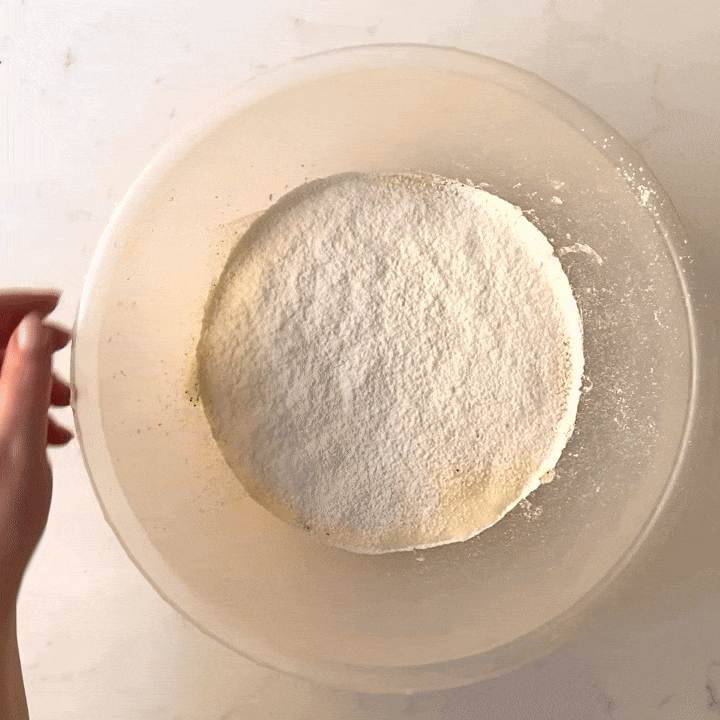
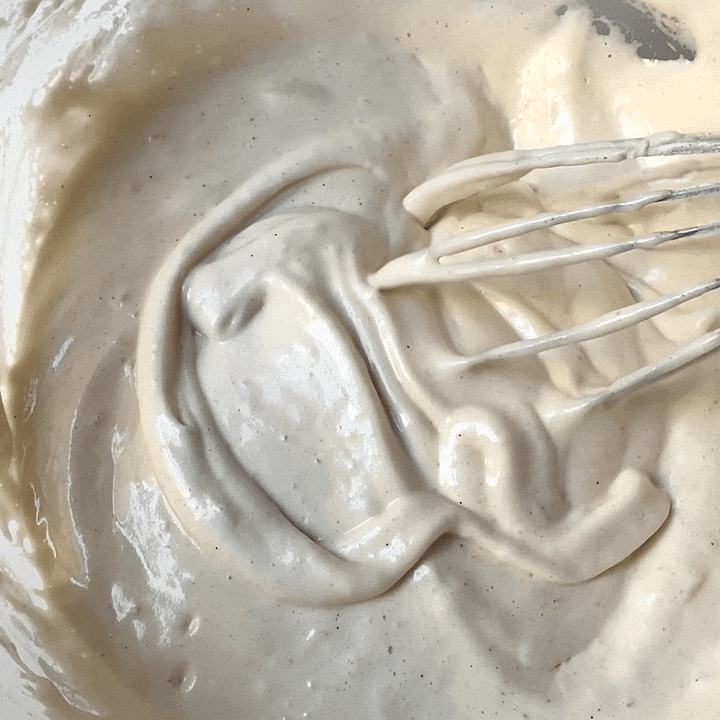
Flour folding & the texture of the batter after all of the flour has been added
The Bake
I line my tins differently depending on the size. For large, round tins, I follow chiffon cake rules and don’t grease or line the tin at all whereas for shallow trays, I line the base. This is just because taller cakes tend to struggle holding themselves up so no greasing or lining the tin helps gives them something to grip onto and grow nice and tall!
Similarly, the bake time and temperature will depend on the size and shape of the tin you’re using, for example, in an 8” tin, I bake at 160°C fan (320°F) but if I’m baking it in a shallow tray I will bake at a higher temperature, for less time to avoid the sponge drying out.
You’ll know when it’s done when it bounces back when you press it, it won’t feel as firm as a Victoria sponge but you’ll definitely be able to tell. If it isn’t ready, your fingers will leave indentations. I like to cool mine upside-down to avoid collapsing, this isn’t totally necessary but it doesn’t hurt!
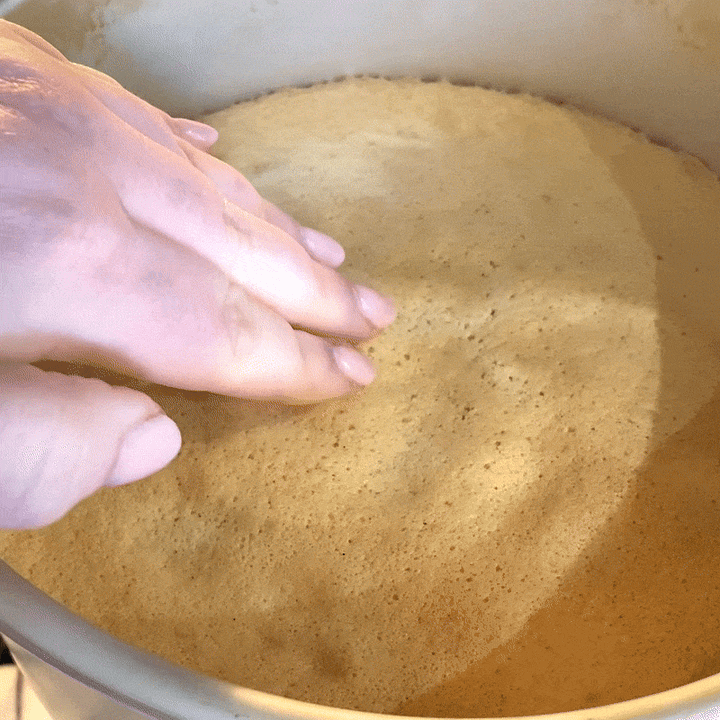
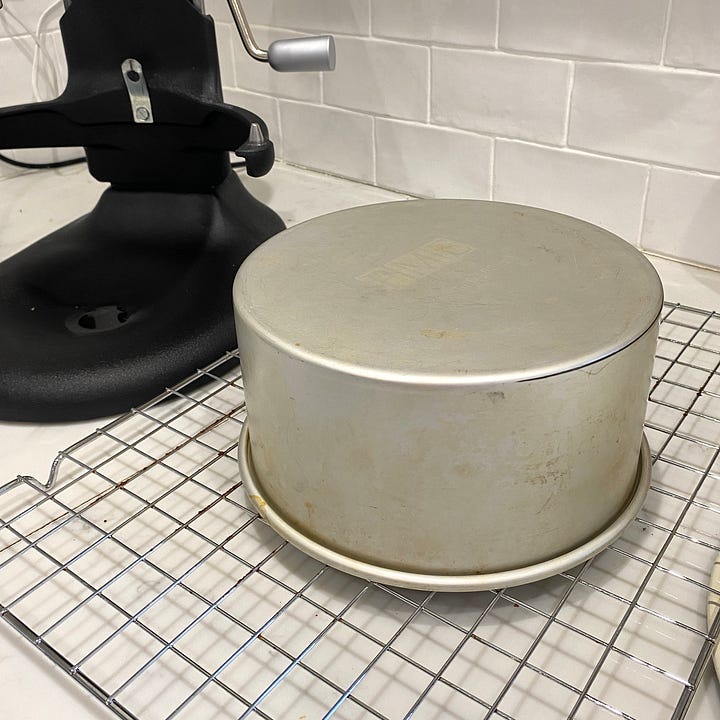
Vanilla Cloud Cake
I wanted to include a simple recipe which uses genoise sponge, this vanilla cloud cake is wonderfully light and airy, with a nice tang from the crème fraîche. It’s really lovey with just the vanilla, but if you fancy adding berries, go for it! I will definitely be re-making this recipe with fresh berries as soon as summer comes around.
Ingredients, makes 1 x 8”/20cm cake
White Chocolate & Crème Fraîche Cream
150g white chocolate
100g whipping cream (1)
1tbsp vanilla paste/seeds from 1 vanilla pod
Good pinch of salt
200g crème fraîche
100g whipping cream (2)
2 leaves/4g of gelatine (optional)
Genoise Sponge
180g large eggs (about 3 large eggs)
95g caster sugar
30g neutral oil that’s liquid at room temp
75g plain flour
10g cornflour
Pinch of salt
1tbsp vanilla extract
Vanilla Milk Soak
150ml whole milk
20g caster sugar
1tsp vanilla paste
To Serve
A punnet of chopped summer berries
Method - White Chocolate & Crème Fraîche Cream
Combine the white chocolate, whipping cream (1), salt and vanilla and heat until the chocolate is completely melted (I do this in the microwave in 20 second bursts).
If using, bloom the gelatine in cold water for 2 minutes, squeeze out and add to the warm cream & chocolate mixture.
Add the crème fraîche and mix.
Add the whipping cream (2) and mix, if there are any lumps blitz with a hand blender.
Cover with clingfilm touching the surface and leave to set in the fridge overnight or for at least 2 hours.
Method - Genoise Sponge
Preheat your oven to 160°C fan (320°F) and get your tin ready, it doesn’t need to be greased or lined, just clean and dry.
Next boil a pan of water and reduce the temperature so it’s just below a simmer. Crack your eggs into a metal bowl (I just use my Kitchenaid bowl) and add the sugar, place this over the pan of water and whisk until the mixture has reached 45°C (113°F) or sugar is dissolved and warm to the touch.
Transfer to a mixer and whisk on high for at least 10 minutes until the mixture has doubled in size and is very pale and fluffy, it should be somewhere between ribbon stage and soft peaks.
Once it gets to this stage, reduce the speed and leave for another 5 minutes, this reduces the size of the bubbles and makes the mixture more stable.
In another bowl weigh the oil and vanilla. Add approximately a quarter of the fluffy egg mixture and mix until emulsified, don’t worry too much about knocking air out at this point.
Add the rest of the whipped egg but don’t mix yet!
Next sieve the dry ingredients in bit by bit, folding with a whisk after each addition, to avoid lumps only add a small amount of flour at a time.
Pour into your tin, tap on your bench a few times to burst any larger air bubbles and bake for 20-30 minutes until springy (in my oven this sponge takes exactly 22 minutes).
As soon as the sponge is baked, turn upside down onto a cooling rack and leave like that until cool.
To remove it from the tin, run a sharp knife around the edge and then firmly tap the tin on the table to release the bottom, it might take a good bang but it will come out.
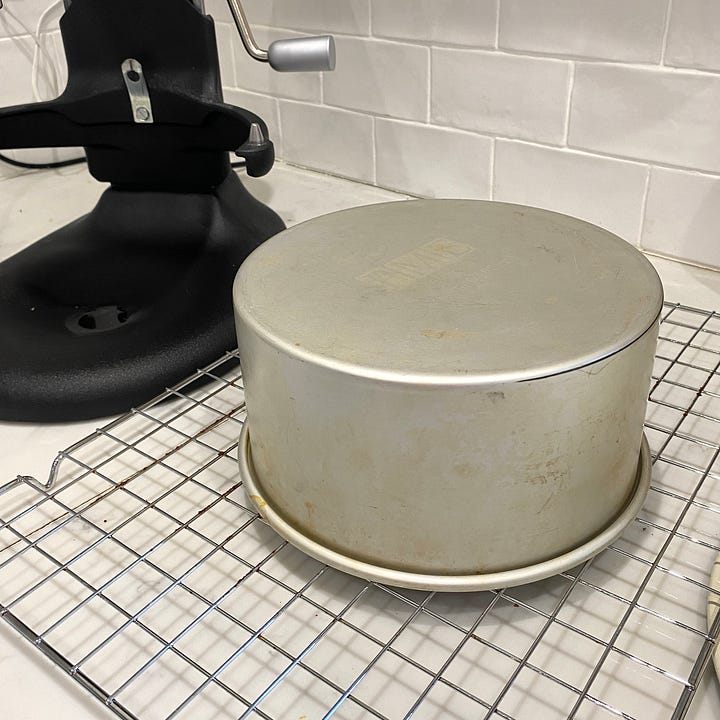
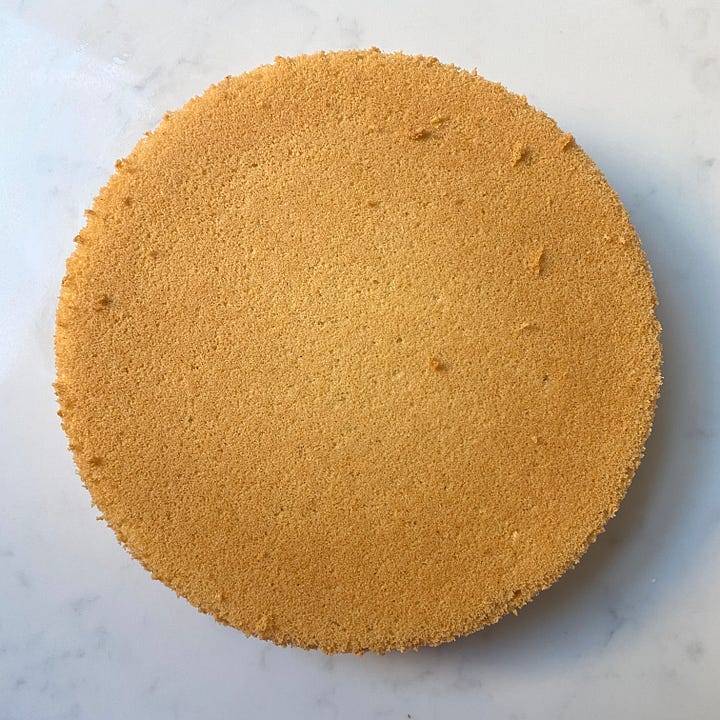
Method - Assembly
Make the vanilla soak by warming all of the ingredients until steaming.
Cut the sponges in half and soak with the milk soak, saving about third. This might seem like quite a lot of soak, but don’t worry, the sponge absorbs it nicely!
Whip the chilled white chocolate & crème fraîche cream until it reaches stiff peaks.
Use about a third for the filling (180g), and the rest to coat the outside.
Use any extra to decorate, I piped a swirly design and decorated with some chocolate decorations and edible flowers.
This cake will keep in the fridge for 3 days.
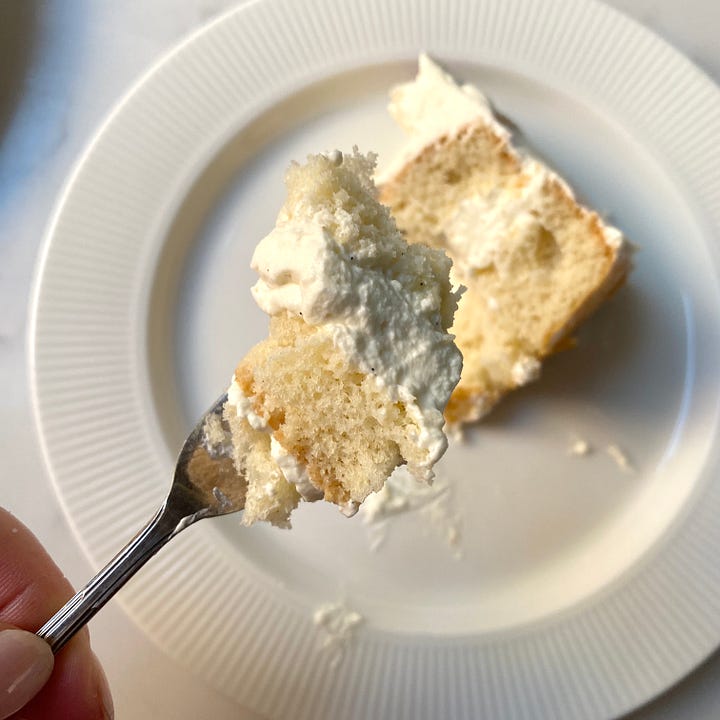
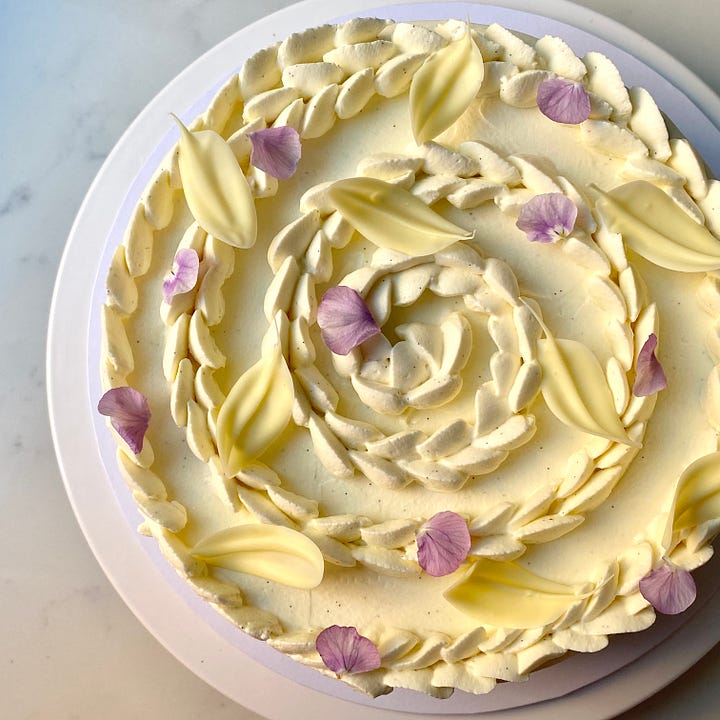
Thank you so much for joining me! I hope this genoise deep dive is helpful and inspires you to try more egg foam cakes, I promise they’re not as scary as they seem! If you enjoyed this post and want to support me please like, comment or share! It really helps my newsletter to grow so that I can continue to create and share free content without relying on paid ads. Thank you so much! 🩷



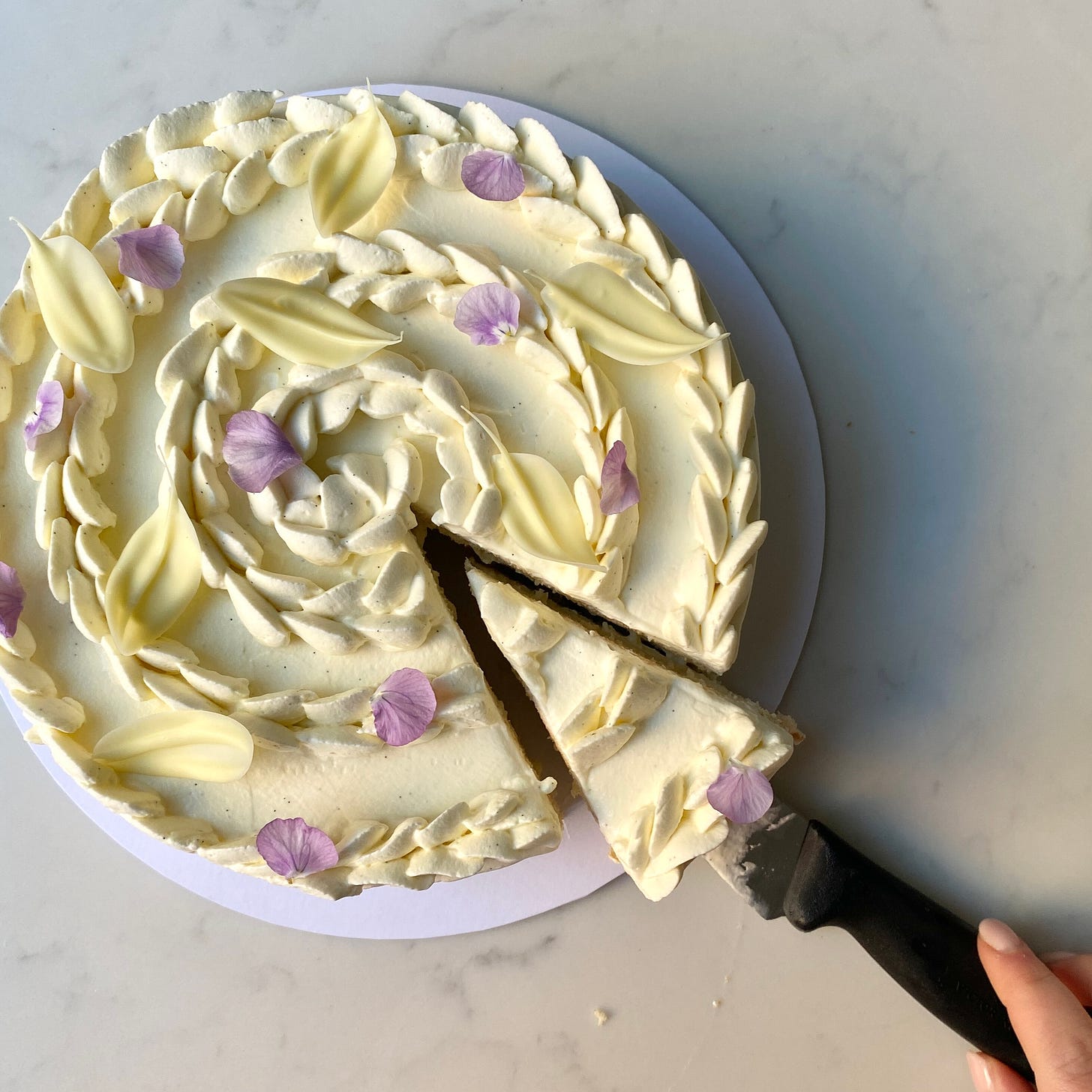
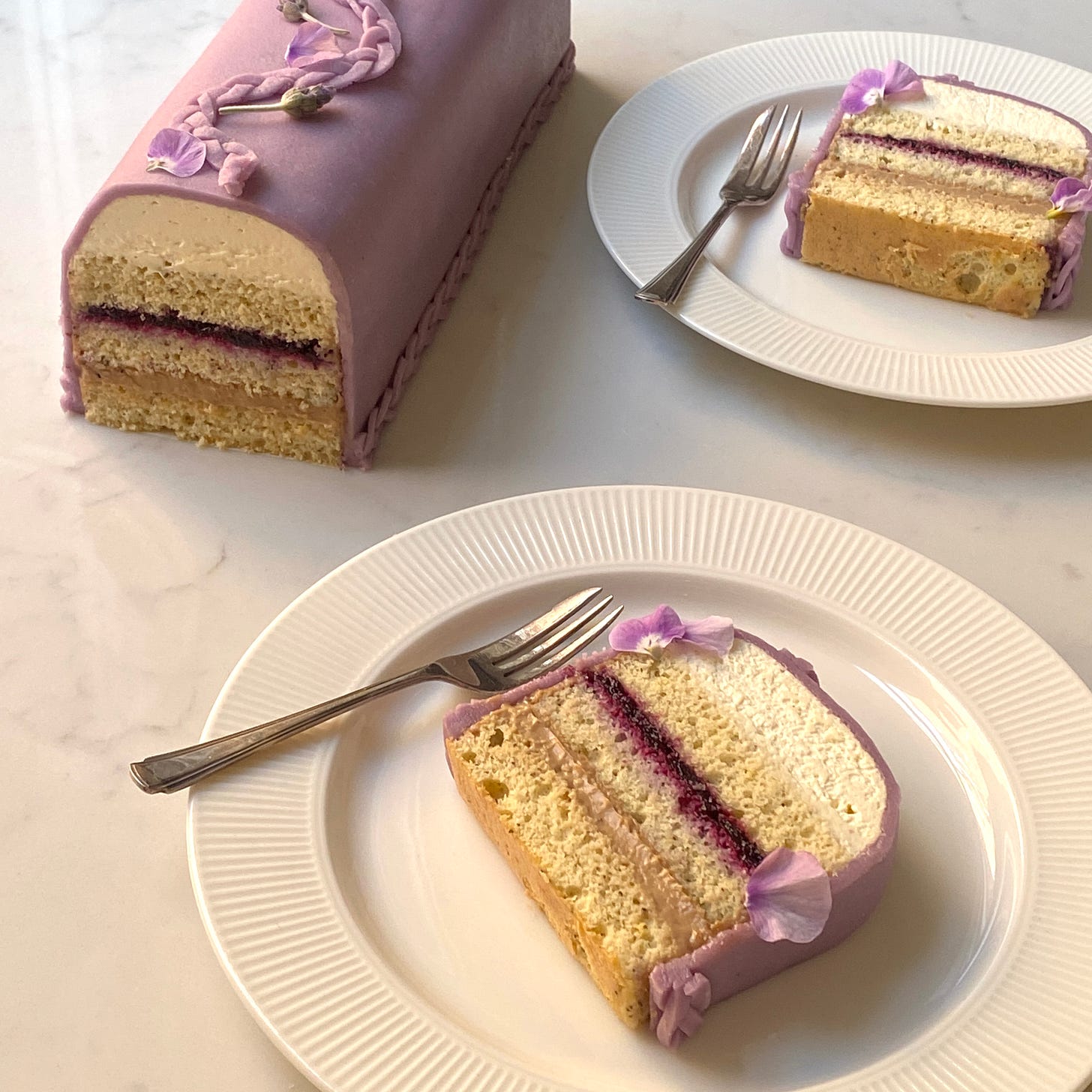
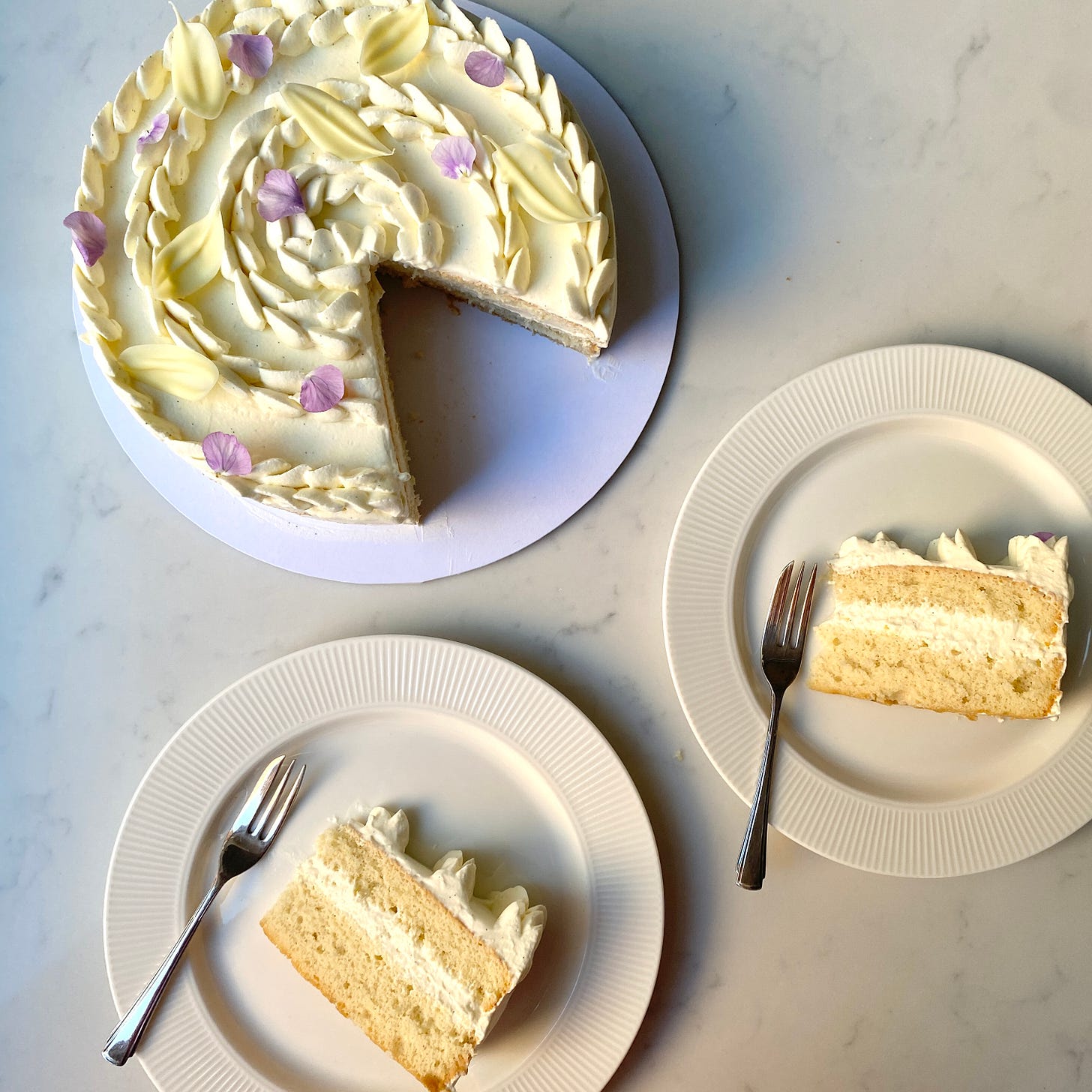
Hello Sophie,
I hope that you are having/had an amazing time in America.
I am thinking of making this cake for my wedding next weekend and will need to feed around 30 people. A few questions...
Do you think doubling this will be enough?
Is genoise sponge quite a sturdy sponge so would be able to hold up a few layers?
If making more of the mixture is that easily done or will it struggle with keeping the egg whites fluffy etc? should I do it separately?
Thanks so much! x
Hi Sophie.. Thank you for sharing your experience..love all your recipe and posts, I've been learning from you a lot,,wish you all the best 💕..